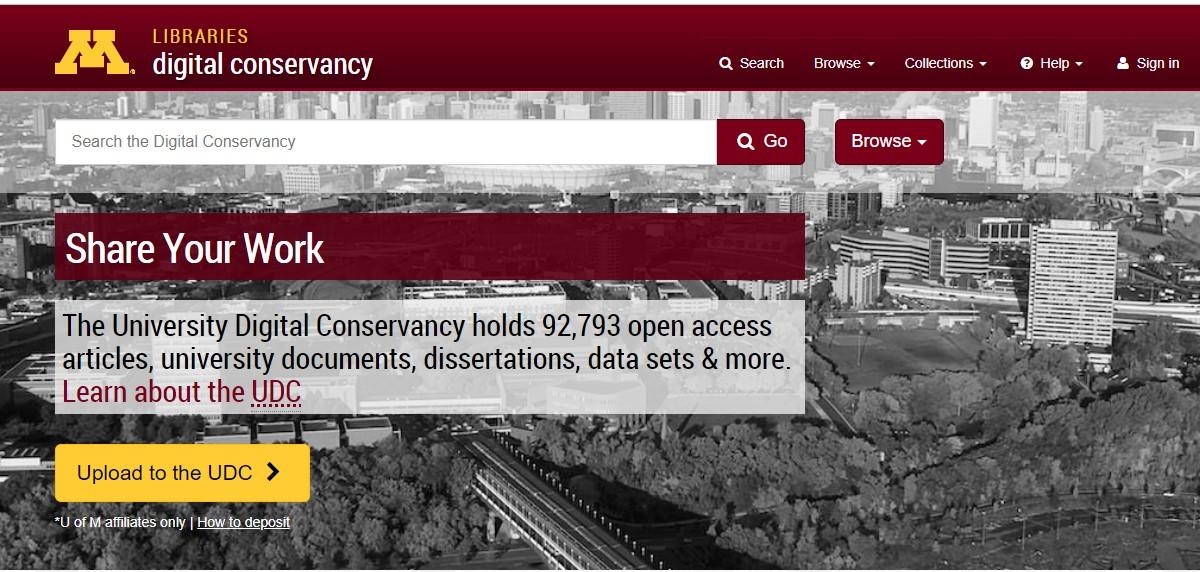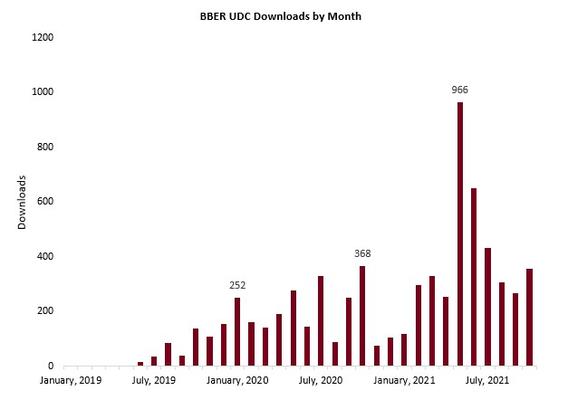Many colleges and universities have taken to collecting and archiving documents, dissertations, data, and articles in a central online location. These documents are publicly and easily accessible to anyone with an internet connection. The University of Minnesota is no different; it has the Digital Conservancy, which currently has 92,791 items and is growing all the time. It is a great resource for researchers or anyone looking to keep abreast of what the U of M system is doing. The Conservancy is easily searchable by date, keyword, author, subject, and collection. A collection are those documents produced by an organization within the U of M system.
For example, the BBER has its own collection on the Digital Conservancy. By combining search methods and the usage statistics that the Conservancy provides, the BBER has compiled a list of highlights from its past two years of uploads.
- The BBER has 85 reports available on the University of Minnesota Digital Conservancy (UDC).
Those 85 reports have seen a total of 7,159 downloads since the first upload by the BBER in June of 2019 according to the usage statistics accessible at the bottom of this page. That’s an average of about 240 downloads a month from then to now.
- The oldest report in the collection was originally published in 1980.
Searching by date, we find that the BBER’s oldest report available is West End Market Analysis. This report examined the feasibility of redeveloping Duluth’s west end at a time when the population and economy of that area were in decline. It has seen 39 downloads so far.
- The newest report in the collection is the St. Louis County Benefits Cliff Visualization.
Completed summer 2021, this report examines social welfare programs in St. Louis County. Specifically, it shows what the assistance is given as a person increases their income. It seeks to show any benefits cliffs, or places whereby taking a raise or working more hours, someone will end up with less income due to passing a threshold on a social welfare program.
-
May 2021 saw over three times the downloads of any other prior month.
May 2021 saw a massive spike in downloads that can be attributed almost entirely to two reports. Most of them, 455 to be specific, were of the Economic Impact of the Hermantown Amateur Hockey Association on Duluth, Hermantown, and Proctor, Minnesota. The Economic Impacts of the Tourism Industry in Duluth was responsible for a further 233 downloads in that time period.
- The most downloaded report has 1,545 downloads.
Far and away the most downloaded report overall is the Economic Impact of Ferrous and Nonferrous Mining on Minnesota and the Arrowhead Region, including Douglas County, Wisconsin. Published in 2020 it has been downloaded 1,545 times, accounting for almost 22% of all BBER downloads.
- The most common type of report is economic impact analysis.
Perhaps unsurprising to those familiar with the bulk of the BBER’s work, economic impact analyses is what makes up the majority of the BBER’s collection in the UDC. Of the 85 reports available, 58 of them are economic impact analysis as a keyword used to describe the type of report.
- Gina Chiodi Grensing is the BBER’s most prolific author.
A search of the BBER collection by author reveals that with author credit on 39 of the 85 reports in the collection, the BBER’s writer/editor has worked on more reports than any of the other 101 authors included in the BBER’s work shown on the UDC. Since her first publication with the BBER in 2012, Gina has worked hard to make the BBER what it is today!

